There was no cavalry that would ride to their rescue when they descended into a hellish pit of bullets and grenades in a dusty city 7,000 miles from home.
After being denied twice, Master Sergeant Gary Gordon finally, after the third ask, received radioed permission to be inserted into the fray. His partner Sergeant First Class Randy Shugart willingly went in with him.
A U.S. Army Blackhawk helicopter had been struck with an RPG, a rocket propelled grenade. With the tail section blown off, warrant officer pilot Mike Durant wrestled the mortally wounded airframe into a hard landing in a tiny clearing. It came to rest in Mogadishu, Somalia, an angry city of 2.5 million, on a hot, dusty October afternoon, after everything else in operation Gothic Serpent had already fallen apart.
Civil war in a foreign land
During the bloody two-year-old Somali civil war, U.S. forces had been pulled into the conflict to the point where followers of local warlord Mohammed Farah Aidid were actively targeting U.S. troops. President Bill Clinton ordered Aidid’s capture.
In October, 1993, Task Force Ranger was formed. It consisted of elements of the U.S. Army 75th Ranger Regiment, U.S. Army Delta Force, and 160th Special Operation Aviation Regiment (SOAR). Their task was a simple, brief snatch-and-grab.
It did not go as planned.
Rangers lead the way
After the first U.S. helicopter was downed by an RPG, TF Ranger was diverted to the crash site, travelling across the city under constant fire from the rapidly gathering Somali militia. The ensuing story is told in Blackhawk Down (2001), both the paperback and movie versions.
The second Blackhawk to go down was Durant’s machine, call sign Super Six-Four.
Gordon and Shugart were aboard SOAR’s Super Six-Two. Highly trained and experienced Delta Force snipers, their mission was to provide air-to-ground cover for Army personnel on the ground. They were to remain aloft.
Delta Force
Master Sgt. Gordon read the situation and came to the quick realization that Super Six-Four could not be adequately protected from the air. Hundreds of armed Somali militia were rapidly converging on the second crash site. Movement could be seen in the cockpit as Durant, still strapped to the seat, with a severely broken leg and crushed vertebrae, mounted a losing defense with a 9 mm MP5 submachine gun.
Descending into the fight against hundreds of armed, motivated terrorists would be a suicide mission, and both Gordon and Shugart knew it.
But there were Americans on the ground who needed help.
There was no one else available to do the job.
Super Six-Two deposited the Delta snipers in a clearing a hundred yards from the crash site. While the two fought their way to the stricken craft, yet another RPG struck that Blackhawk they had just exited. Crewmembers were left severely wounded and the co-pilot unconscious. Pilot CW3 Mike Goffena flew his crippled bird successfully back to base with a bullet in his shoulder.
Goffena’s incredible effort would warrant a story all its own, but it was overshadowed by events of the day.
Randy Shugart was armed with an M-14 semi-automatic rifle firing a 7.62 mm round, heavier than the 5.56 mm round of Gary Gordon’s weapon of choice, the CAR-15. The Colt Automatic Rifle, a derivative of the Viet Nam era M-16, fired the lighter weight cartridge; less weight meant more ammunition could be carried.
(The “AR” designation in what we know today as the AR-15 stands for “ArmaLite Rifle.” Colt modified the name for the production of their military version.)
Professionals at work
On the ground, the snipers went about their work calmly and professionally, checking on Durant and the other crewmembers. They established a perimeter as best they could around the downed Blackhawk.
Durant later spoke of them: "Their actions were professional and deliberate to the point that they looked like they were planning a parking lot. They didn't seem alarmed [at] the situation that we were in… Just focused on the task…”
The enraged mob of Somali militia showed up. According to Durant’s testimony, many simply charged wildly without cover. They were taken down by the snipers as soon as they appeared.
Others cowered for cover where it could be found, their savage bloodlust suddenly cooled with recognition of certain death from the Americans’ guns.
The numbers, however, would eventually tell the story. More militia arrived and pushed forward. Gordon and Shugart fired as fast as they could, exchanging empty magazines for full until all the ammunition was gone.
"Their actions were professional and deliberate to the point that they looked like they were planning a parking lot. They didn't seem alarmed [at] the situation that we were in… Just focused on the task…” — Michael Durant
Heroes fall
Reports vary on which sniper fell first. The official version is that Shugart was the first. Durant’s recollection, however, is that the remaining Delta Force operator brought him the CAR-15 — Gordon’s weapon — to replace the pilot’s under-powered MP5. This certainly means that Randy Gordon was already down.
And then the second operator ran out of ammunition. He resorted to his sidearm, and fired to the last. Overwhelmed by a wave of militia and Somali civilians, he died at the scene alongside his Delta teammate.
The mob descended on Durant, the only American remaining alive at the site. Surprisingly, they did not kill him. He was captured and beaten, taken from the site in excruciating pain, and held for a few days until released.
Gordon and Shugart were among the 18 U.S. servicemen killed, and 73 wounded, that day in Mogadishu.
After the battle
The bodies of the Delta Force snipers and other deceased crewmembers of Super Six-Four were dragged through the streets of Mogadishu and mutilated. Their remains were eventually returned to the U.S. for burial: Gary Gordon to Maine; Randy Shugart to Pennsylvania.
Warlord Aidid claimed that only 315 Somalis had been killed that day. U.S. ambassador Robert B. Oakley put the number of Somali casualties at over 1,500.
At the site of Super Six-Four, the number of dead and wounded Somalis is impossible to determine. Somali sources put the number of dead at 25. That seems low, an unlikely number, given the vast quantity of targets and the rate of disciplined, aimed fire from two of the most competent and determined warriors this world has ever produced.
The title of Michael Durant’s book is somber and honest: In the Company of Heroes, New American Library, 2003.
Gary Gordon and Randy Shugart were each awarded the United States Congressional Medal of Honor, posthumously.
Memorial Day 2024
This Memorial Day, as you fry the hamburgers and text your friends and share entertaining memes, take a minute to gaze on the Stars and Stripes.
And just for a moment, contemplate the blood of warriors invested in those colors.
From us at The Alligator Blog, enjoy your holiday.


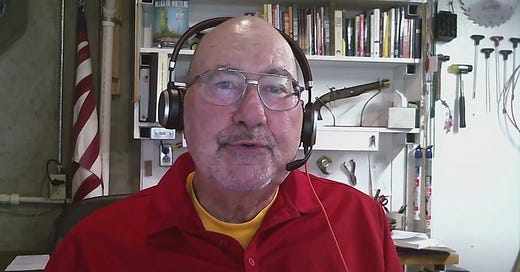


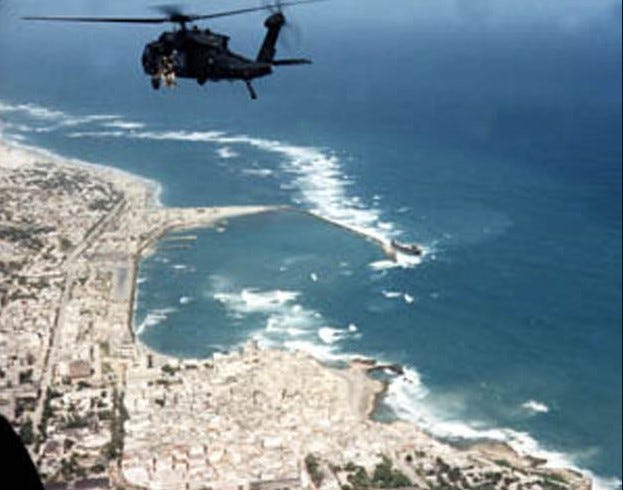
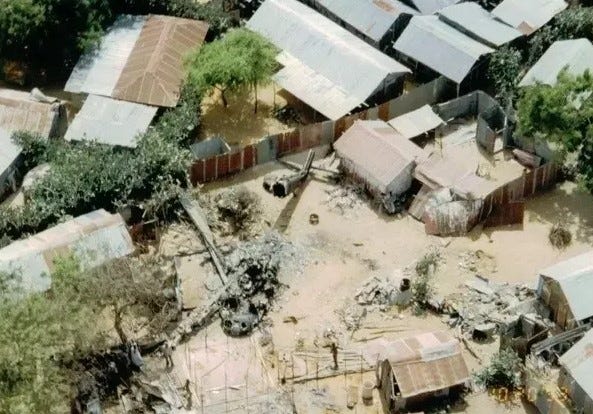

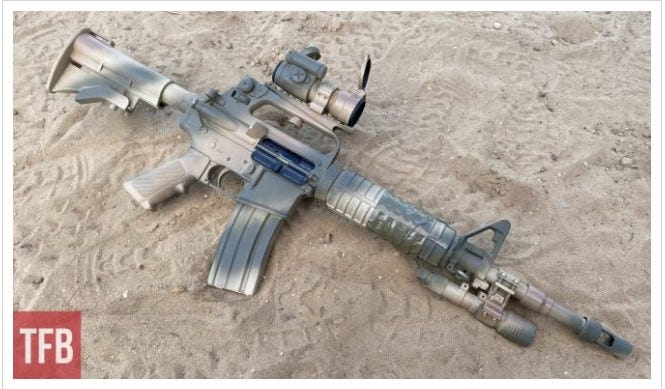
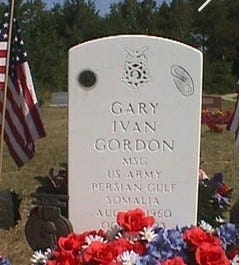
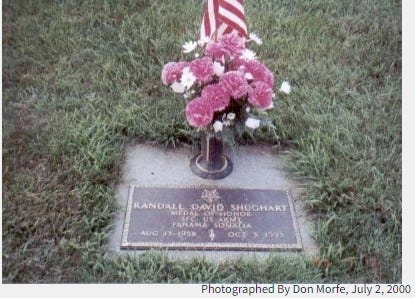
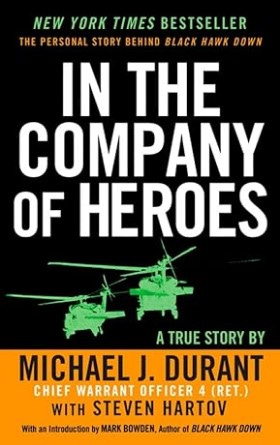
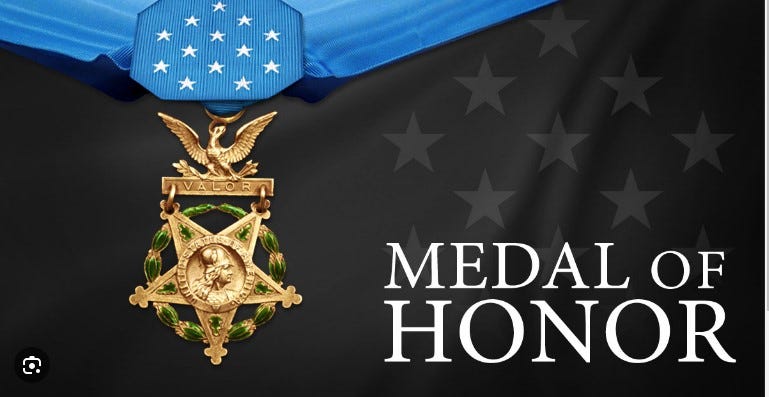
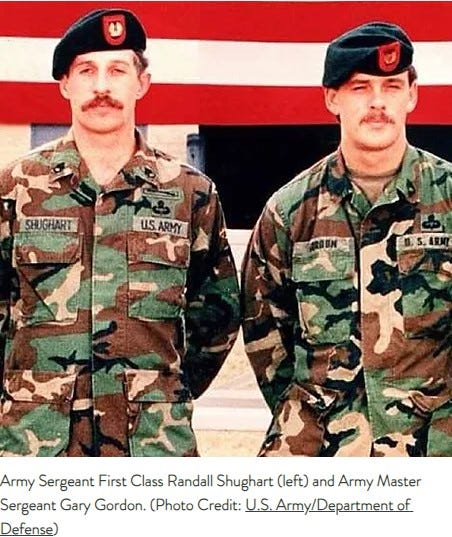
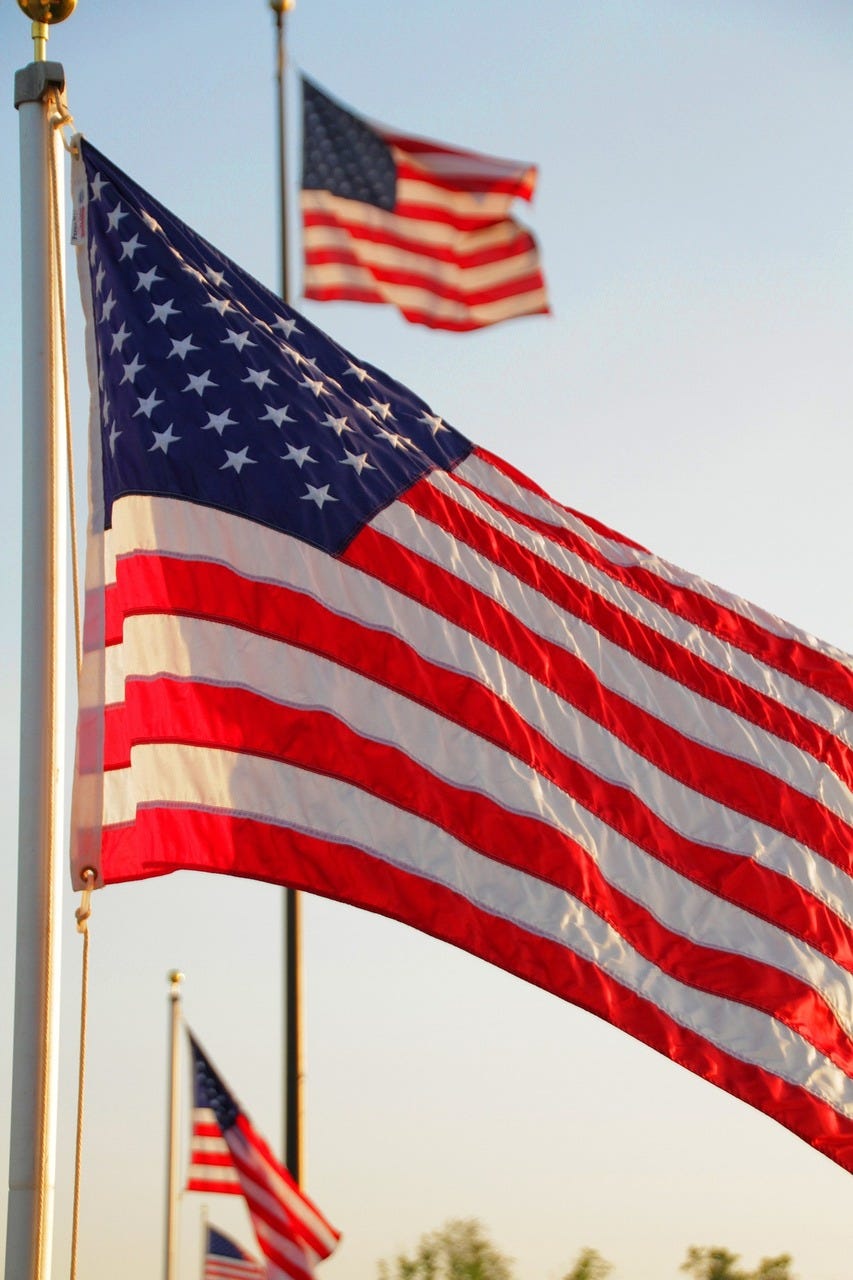



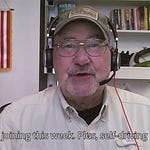





Share this post